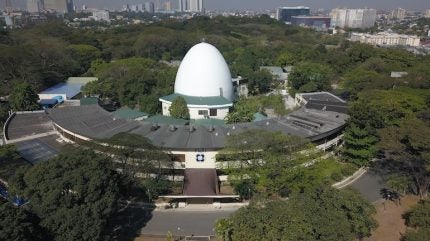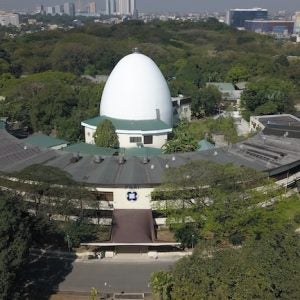
Manila Electric Co (Meralco) is seeking new foreign partners for nuclear power projects after its agreement with nuclear start-up US Ultra Safe Nuclear Corp (USNC) was curtailed. USNC filed for Chapter 11 of the US Bankruptcy Code in October 2024.
Meralco and USNC had signed a cooperation agreement in November 2023 to explore the potential deployment of USNC’s Micro-Modular Reactor (MMR) and Small Modular Reactor (SMR) technology in the Philippines.
“Ultra Safe Nuclear had a bit of a financial challenge, so our partnership didn’t progress,” Meralco Chief Operating Officer Ronnie Aperocho told reporters. “Now we’re looking for partners for SMRs. We’re talking to a lot of people.”
He added: “First-of-a-kind power plants are critical. It’s our requirement that before we allow them to be installed here, the country of origin must first run it for two years without an accident, unless our President waives such a pilot, observation stage.”
The USNC study was intended to assist Meralco in assessing the feasibility of deploying MMR technology, including financial, technical, safety, and site considerations. Aperocho said Meralco is now in discussions with other foreign companies and aims to finalise a new agreement this year.
“But at the end of the day, progress can only be made once the law is passed here in the Philippines,” Aperocho said. The PhilAtom bill, or the Philippine Nuclear Energy Safety Act, which aims to establish a comprehensive legal framework for the safe and peaceful utilisation of nuclear energy, is currently being considered in Congress.
Once enacted into law, the planned Philippine Atomic Energy Regulatory Authority will assume all regulatory tasks currently managed by the Philippine Nuclear Research Institute (PNRI). Under the Philippine Energy Plan, the government wants to deliver at least 1,200 MWe of nuclear capacity by 2032 and scale this up to 2,400 MWe by 2035 and 4,800 MWe by 2050.
Aperocho also welcomed memoranda of understanding recently signed by US-based EōS Organisation, Fulbright Philippines, Mindanao State University-Iligan Institute of Technology (MSU-IIT), and US nuclear start-up Valar Atomics, supporting PNRI, to develop the country’s nuclear workforce.
“This MOU is very much aligned with our development strategy at Meralco, so we have been sending scholars already. It’s better that we have this local training programme for our future nuclear engineers or technicians,” Aperocho said. “At the end of the day, you can train them, but if there are still no projects in the Philippines, how can you employ them? We see that some of our best nuclear engineering scholars are working abroad,” he said.
The partnership, which allocates up to $400,000 in funding, aims to provide opportunities to Filipino students and professionals to pursue nuclear studies in the US. Last year, Meralco sent the pilot batch of its scholars to the US and China, with plans to send more to partner institutions in France and Canada
Meanwhile, Valar Atomics said it plans to build a 100kW “micro high temperature gas reactor” in partnership with PNRI as a “proof of concept”. Valar Atomics Research Institute President Kip Mock said the reactor would be the first of its type to be built in the Philippines. He added that the total budget will be “tens of millions” in US dollars. “It’s not going to be connected to the grid or generating electricity. It’s simply a proof of concept, the pilot project for future commercial reactors that we hope to break here to the Philippines soon”
Mock said the Philippines is an archipelago and has a strong need for reliable baseload power. “And so, we think that it’s really important to develop this technology here and collaboration with the PNRI and PNSF (Philippine Nuclear Science Foundation), and local universities. MSU-IIT is the first one, but we hope to bring more Philippine universities into this project and into future projects,” he said.
“We have already begun the licensing process with the PNRI through their regulatory arm. We will work as quickly as we can while maintaining all standards of safety safeguards and security, ” Mock noted. California-based Valar confirmed it had initiated the licensing process while finalising plans for the construction of the reaction at a location that they did not disclose.
“We see this as a very long-term partnership,” Mock added. “We see this being a multi-decade process of building out energy infrastructure and reducing costs of energy here.” He noted that the signing of the US and Philippines’ Agreement for Cooperation in Peaceful Uses of Nuclear Energy (123 Agreement), which entered into force in July 2024, paved the way for US firms to participate in the emerging Philippine nuclear industry.
PNRI currently operates the Philippine Research Reactor-1 (PRR-1) Subcritical Assembly for Training, Education & Research (SATER) facility housed in the building of the original PRR-1, which was shut down in 1988. The General Atomics 1 MW MTR-type open pool general-purpose reactor operated from 1964 to 1984 and was utilised for training and research in nuclear science as well as for isotope production.
Construction work on PRR-1 SATER began in 2017 and concluded in 2021. Commissioning began in June 2022, when PNRI started to load TRIGA (Training, Research, Isotopes General Atomics) fuel elements into the subcritical assembly. Following PNRI’s review of the commissioning tests, PRR-1 SATER was granted authorisation for operation and was restarted in March 2023.






